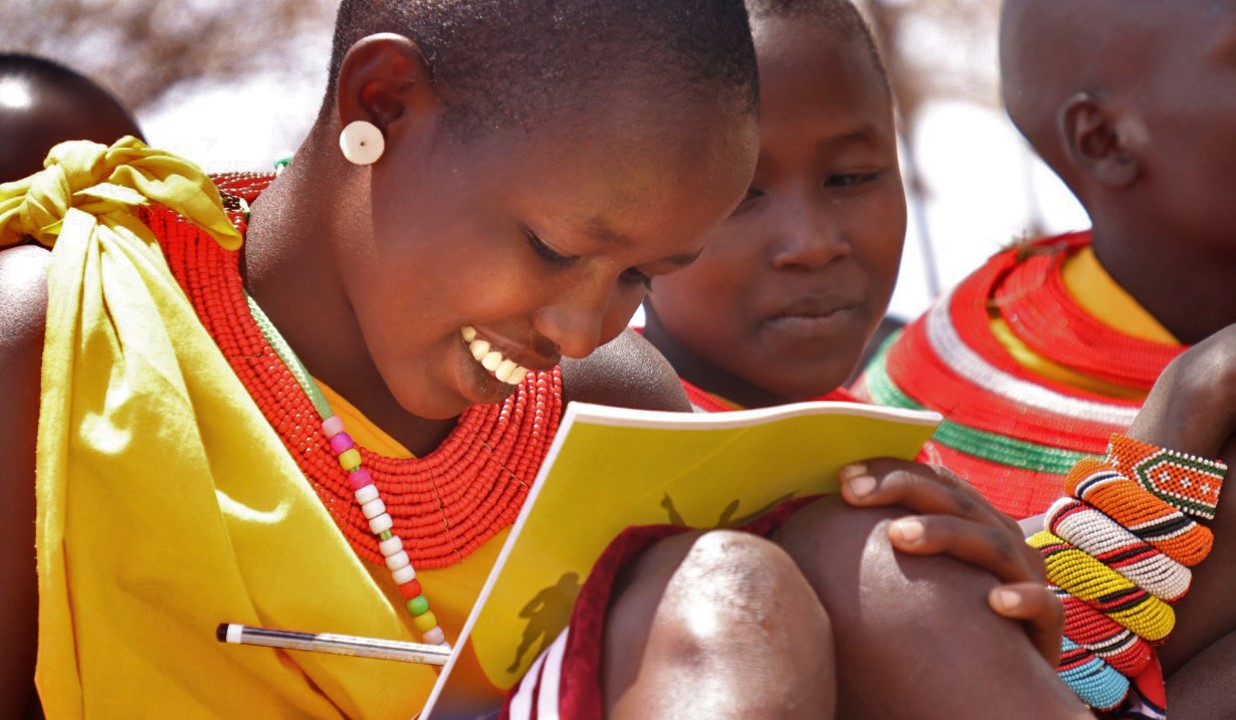
Mission
The mission of Too Young to Wed is to empower girls and end child marriage globally.
Life Challenges of the Women Served
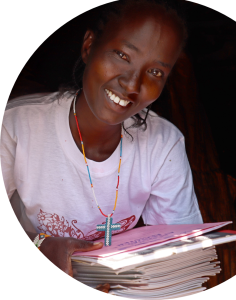 Globally, every two seconds one girl is married against her will.
Globally, every two seconds one girl is married against her will.
Child marriage is inextricably linked with infant and maternal mortality, education disruption, cyclical poverty, and domestic violence. An additional 10 million girls are at risk of child marriage in the next decade as a direct result of the coronavirus pandemic, as deepening poverty drives more families to marry off their daughters. If current rates continue, an estimated 160 million girls will be subjected to this abuse before 2030.
Child marriage causes irreversible trauma. When a girl is forced into marriage, she is robbed of her bodily autonomy and subjected to early, forced, and frequent sexual relations, increasing her risk of reproductive health complications. Her social networks, her physical and emotional wellbeing, and her right to complete her education are all taken from her.
The risk of maternal mortality is five times higher for girls who give birth under 15 years of age. Complications arising from pregnancy and childbirth, particularly among Female Genital Cutting/Mutilation (FGC/M) survivors, are a leading cause of death among adolescent girls in low-income countries.
In Samburu, girls experience life-altering events at some of the highest rates in Kenya – with 86 percent undergoing FGC/M, 50 percent being married off as children, and 62 percent becoming teen mothers. Too Young to Wed (TYTW) has supported Samburu girls as young as 10 who were forced to undergo FGC/M and child marriage at the expense of their education. School closures during COVID-19 further threatened progress towards gender equality as many Samburu families reverted to negative coping mechanisms to alleviate the economic stress of the pandemic. According to an April 2021 press statement by Kenya’s Cabinet Secretary on Increased Gender Based Violence (GBV), incidences of reported GBV cases increased by 92 percent between January and June 2020, compared to the same timeframe in 2019. The most common forms of GBV reported in the statement were physical assault, rape/sexual assault, child marriages, FGC/M, and neglect.
Although the Kenyan Government has set the legal age of marriage at 18, child marriage is still rampant in certain communities and fueled by harmful gender and social norms, including existing traditional practices leading to poor reproductive health outcomes. Samburu County (total county population: 310,320) faces comparatively high levels of insecurity, high maternal and child mortality rates, and low literacy levels (only 34 percent of the population). Samburu has an absolute poverty rate of 75.8 percent, a term defined simply as the inability for a household, family, or person to meet basic needs including food, shelter, safe drinking water, education, and healthcare.
Further complicating matters, the Samburu community’s pastoralist way of life – carried on nearly unchanged for more than 3,000 years – is under serious threat due to climate change, rangeland fragmentation/degradation, and violent conflict, as well as forced settlement schemes. Negative impacts on women and girls include increased domestic and income-generating burdens, especially when men need to graze livestock at distant sites or seek alternative employment. Because of land degradation, Samburu women and girls spend more time grazing animals, searching for water, and gathering fuelwood farther from home, impacting their safety.
The Project
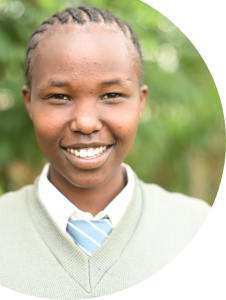 Internationally known for their beautiful and colorful adornment, attire, and hairstyles, members of the Samburu community are sometimes known as “The Butterfly People.”
Internationally known for their beautiful and colorful adornment, attire, and hairstyles, members of the Samburu community are sometimes known as “The Butterfly People.”
The Butterfly Project’s main goal is to reduce gender disparity among historically excluded girls, beginning at age 9, who are at risk of child marriage, FGC/M, and other harmful practices, while increasing school attendance and literacy, delaying marriage, and informing them of their rights. The project will provide support and access to education, financial inclusion, safe spaces, mentors, and leadership opportunities. It focuses on the pastoralist ward of Wamba North, piloting in Swari’s five sub-villages. It introduces a suite of resources to all eligible 9-year-old girls in the catchment area, to prevent harmful practices before many girls encounter GBV, while also supporting girls who have endured abuse. The project empowers the rising generation of girls between the ages of 9 – 17, thereby equipping them for the future.
The project offers a suite of community-based investments in girls’ protective social, educational, health, and economic assets:
- local day school scholarships or evening literacy/numeracy classes (supported by solar power)
- curriculum-based mentoring
- community dialogue/family agreements
- livestock and nutrition provisions, and
- an economic empowerment component.
TYTW will establish girls’ savings clubs in all primary schools in Swari village (approximate population of 3,000) of Wamba North Ward, a particularly remote and under-resourced part of Samburu. For all cohorts, TYTW will utilize a financial literacy curriculum from the Population Council as an entry point, while offering contextualized life skills and sexual/reproductive health lessons through games, music, and instruction during weekly meetings.
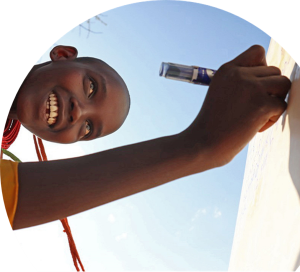 The Parental and Community Dialogue project component leverages traditional Samburu norms of honesty, kindness, and upholding the sanctity of one’s word to engage parents and extended family members, sharing key information and resources on the communal responsibility to protect girls. Parents and community members taking part in the sensitization sessions are held to a higher degree of accountability for preventing these practices from happening within their families. In order for girls to receive scholarship support, parents will be required to sign agreements pledging to prevent harmful practices from happening within their households. TYTW has employed incentive-supported family agreements in Samburu in the recent past with a near 100 percent success rate among project beneficiaries.
The Parental and Community Dialogue project component leverages traditional Samburu norms of honesty, kindness, and upholding the sanctity of one’s word to engage parents and extended family members, sharing key information and resources on the communal responsibility to protect girls. Parents and community members taking part in the sensitization sessions are held to a higher degree of accountability for preventing these practices from happening within their families. In order for girls to receive scholarship support, parents will be required to sign agreements pledging to prevent harmful practices from happening within their households. TYTW has employed incentive-supported family agreements in Samburu in the recent past with a near 100 percent success rate among project beneficiaries.
Keeping girls in school is the single most protective factor against child marriage. On average, the likelihood of a girl marrying as a child is 6 percent less for every additional year she stays in secondary education. Education is also a powerful path toward transforming norms around gender equality – strengthening girls’ skills, knowledge, and bargaining power to challenge gender discrimination. When highly vulnerable girls (those who have survived or are at high risk for child marriage) attend day school or evening educational programming and are equipped with protective human, social, economic, and cognitive assets, they are further protected against these harmful practices. Girls who delay marriage are at far lower risk than their married counterparts for maternal and infant mortality and morbidity.
Beneficiaries will also be at substantially lower risk for other forms of GBV such as domestic violence, and FGC/M. Girls’ groups and safe spaces provide an additional way to be on the lookout for risk of violence, and in cases of especially high risk, girls can secure alternate safe living arrangements when necessary. Girls indicating signs of abuse, illness, and/or pregnancy will receive casework support on safe social service and healthcare options. Beneficiaries will enjoy greater economic independence in the form of strengthened financial literacy, mobile banking resources, savings accounts, livestock, and numeracy. Girls will also benefit from strengthened social wellbeing due to positive social connections, strengthened peer-to-peer relationships, self-management tools, increased confidence, and goal-setting skills. Parents and extended family members of girls in high-risk areas will receive locally led sensitization programming, helping to contribute to long-term social norm change and buy-in for community reduction of GBV and child marriage.
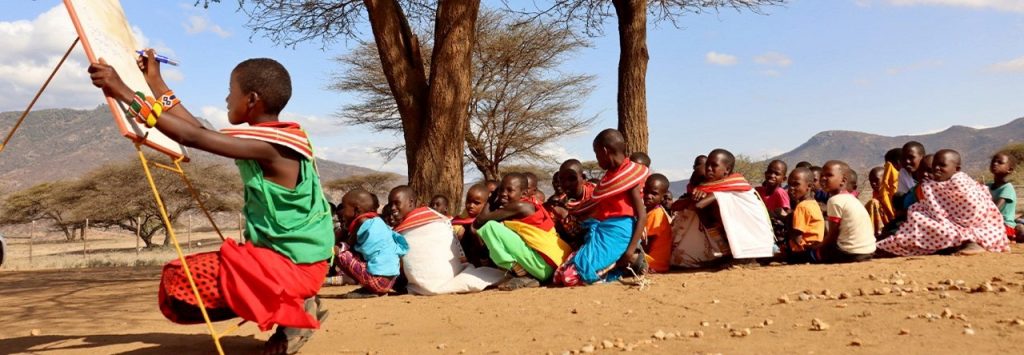
The project has multiple layers of both direct and indirect beneficiaries. The project aims to directly support up to 310 mentee girls (estimated to be girls ages 9 –17 in Swari from the 2015 Kenya Demographic and Health Survey) through all program elements, including education, psychosocial support, economic and health support.
Approximately 2,700 of the girls’ family members and neighbors will also benefit through agricultural and technological resources, with the girls as primary resource stewards.
During the project:
- at least 190 secondary school girls and at least 120 primary school girls will be offered support to stay in school (scholarships, uniforms, fees, etc.)
- at least 22 female mentors will be recruited and trained
- at least 300 girls and their families will gain access to economic empowerment activities to gain earnings
- at least 2,000 additional direct beneficiaries, including girls’ family members and neighbors, will receive new agricultural and technological resources.
Over time, the project will support thousands more girls, families, and surrounding community members as additional indirect beneficiaries in the respective areas through cascading mentorship touches, transformation of local gender norms, and new sources of empowering information and resources.
Direct Impact: 950+ (including mentees, mentors, enumerators, mothers/sisters of mentees); Indirect Impact: 2,000+
UN Sustainable Development Goals
![]()
![]()
![]()
![]()
![]()
![]()
![]()
![]()
![]()
![]()
![]()
Questions for Discussion
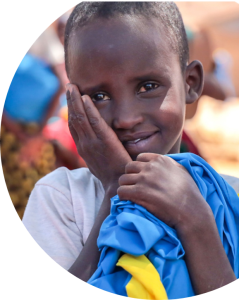 What are the intangible benefits of girls having a safe space and safe people with whom they can communicate?
What are the intangible benefits of girls having a safe space and safe people with whom they can communicate?- Do you think the concept of “cascading mentorship” in communities can magnify the success of this project? How have you witnessed that in your own community?
- How do you think this project can help girls regain the ground lost by the pandemic?
How the Grant Will be Used
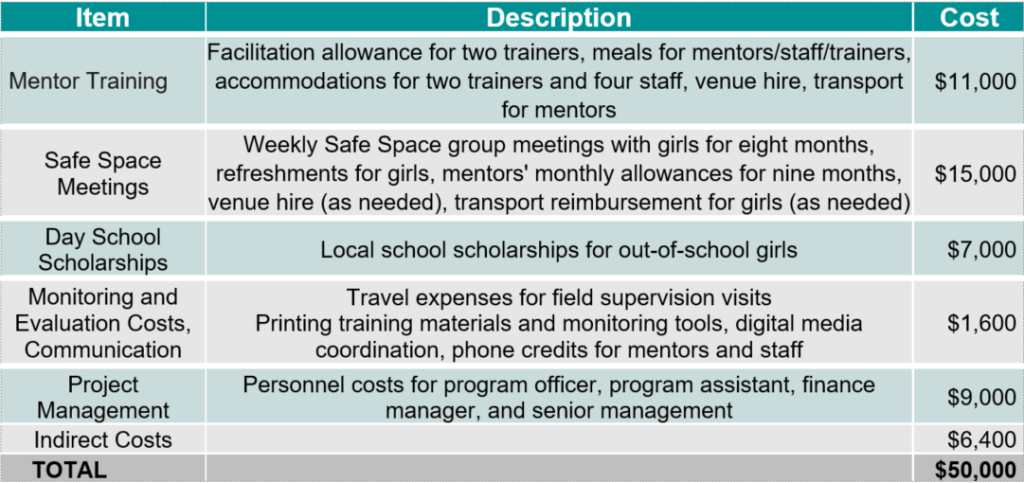
Why We Love This Project/Organization
Too Young to Wed’s Butterfly Project focuses on reducing gender disparity among historically excluded girls who are at risk of child marriage, FGC/M and other harmful practices. They achieve this by increasing school attendance and literacy, delaying marriage, informing girls and families of their rights, and providing support and access to education, financial inclusion, safe spaces, mentors, and leadership opportunities.
Evidence of Success
TYTW has educated billions about the consequences of child marriage by securing world-class media coverage. Through their media reach and exhibitions with the United Nations Population Fund and Canadian government, more than 9.7 million individuals have been educated about the child marriage crisis in Nepal alone. Photographs by child marriage survivors from a workshop in Kenya earned more than six billion views from publications in top-tier media outlets including The New York Times, CNN, Refinery 29, Glamour, and National Geographic.
Shining a light on the troubling pandemic-related spikes in GBV, TYTW published its December 2020 New York Times original reporting story, “These Girls Are Being Cut and Married in Droves.” Less than 90 days after the story’s publication, the TYTW team had the honor of witnessing His Excellency President Uhuru Kenyatta (joined by several top Cabinet officials) preside over Samburu County’s highest 40 elders for the Kisima Declaration to end child marriage and FGC/M, among other forms of GBV. TYTW directly called for, and was granted, the inclusion of child marriage in the title and main text of the declaration.
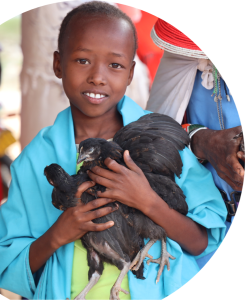 TYTW has directly kept thousands of girls from being forced into marriage globally through its evidence-based programming. In Afghanistan, TYTW’s Afghanistan Emergency Initiative provides safe houses, food, transportation, documentation, and other support services. TYTW’s Parwana Food, Education, and Livelihoods Program, which currently feeds 2,700+ people each month, was also created to combat food insecurity that is pushing increasing numbers of parents to sell their girl children. Families of the girls in this program are shepherded into TYTW’s livelihoods program.
TYTW has directly kept thousands of girls from being forced into marriage globally through its evidence-based programming. In Afghanistan, TYTW’s Afghanistan Emergency Initiative provides safe houses, food, transportation, documentation, and other support services. TYTW’s Parwana Food, Education, and Livelihoods Program, which currently feeds 2,700+ people each month, was also created to combat food insecurity that is pushing increasing numbers of parents to sell their girl children. Families of the girls in this program are shepherded into TYTW’s livelihoods program.
In Kenya, TYTW has provided 20,520+ days of schooling to girls, 1,300+ scholarships, including tuition, housing, supplies, transportation, and psychosocial support for girls who have survived or are at high risk for child marriage. Through TYTW’s safe center programming, more than 1,500 girls have accessed shelter, food, trauma counseling, medical support, transportation, connection to boarding schools, vocational programs, and other community resources. More than 300 girls have been reconciled and reintegrated back into their communities with professional support through authentic, peaceful, and constructive dialogue under the leadership of local chiefs and elders. These programs have resulted in a safer, healthier, and more sensitive environment to which girls can return, and long-term social norm change in communities, ultimately leading to lower incidences of child marriage.
In Samburu County, TYTW engages parents, youth leaders, clan elders, and other key decision makers in ongoing dialogues around gender roles and GBV.
Voices of the Girls
“I am dedicated to seeing young vulnerable girls in my safe space, and in my village in general, achieve their dreams in life.” – Melian, born and raised in Ngilai Village, Samburu, was one of the few local girls at the time who had the opportunity to attend school. She is one of the courageous local mentors in TYTW’s Butterfly Project.
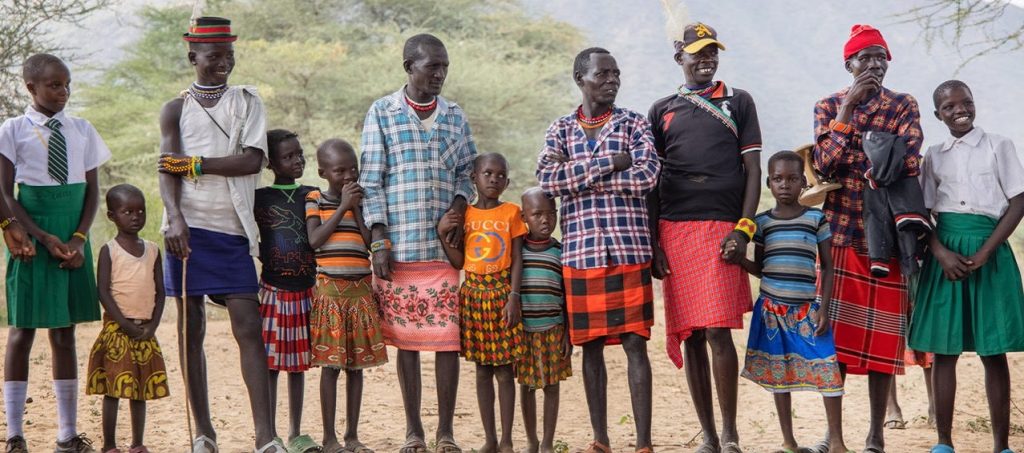
“Girls have always been marginalized when it comes to development projects. This project will be one of a kind and its approach is admirable. It focuses on a group that has always been marginalized in the community when it comes to projects. We are longing to see the implementation because it will change the power dynamics and make girls economically powerful. Girls will have ownership of assets which they will decide to take with them during marriage or leave behind. This will bring unusual business in the community where girls’ voices will be heard and they can also be consulted during decision-making.” – Makelina Lenareu, Women’s Leader, Ngilai village
“I am delighted. The project will go a long way in changing girls’ lives and also change how the community deals with girls.” – Sarah Lekerpes, Girls’ Representative, Ngilai village
“We are looking forward to the project implementation. I am delighted because I see hope for the young girls. The young girls, mostly the age of my young daughters, will be lucky to be part of this project – unlike other older women who didn’t get that opportunity.” – Damaris Lenarerei, Girls’ Youth Focal Person, Ngilai village
About the Organization
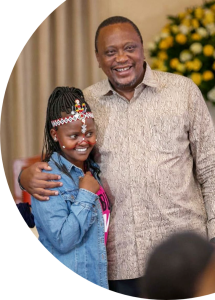 Pulitzer Prize-winning photojournalist and activist Stephanie Sinclair founded TYTW as a nonprofit organization whose mission is to empower girls and to end child, early, and forced marriage (CEFM) globally. In 2003, Sinclair, as a photojournalist, was working in Herat, Afghanistan on a story about girls and women who had set themselves on fire, and she learned that most of the burn ward patients had been forced into marriage as children. They had been married at 9, 10, 11, and in their misery, they had preferred death over the lives they were living. After that experience, Sinclair dedicated her life to ending child marriage, inspiring millions through her seminal “Too Young to Wed” photojournalism series.
Pulitzer Prize-winning photojournalist and activist Stephanie Sinclair founded TYTW as a nonprofit organization whose mission is to empower girls and to end child, early, and forced marriage (CEFM) globally. In 2003, Sinclair, as a photojournalist, was working in Herat, Afghanistan on a story about girls and women who had set themselves on fire, and she learned that most of the burn ward patients had been forced into marriage as children. They had been married at 9, 10, 11, and in their misery, they had preferred death over the lives they were living. After that experience, Sinclair dedicated her life to ending child marriage, inspiring millions through her seminal “Too Young to Wed” photojournalism series.
TYTW traces its official launch back to Oct. 11, 2012 – the first International Day of the Girl Child. Dignitaries from around the world gathered at the United Nations (UN) in New York and, surrounded by Sinclair’s photographs of child brides as young as 5, pledged to do whatever it took to end child marriage. Three years later, TYTW’s international traveling photography exhibition on child marriage would serve as the backdrop for historic global policy decisions, ultimately helping to yield UN Sustainable Development Goal (SDG) 5.3 which aims to “eliminate all harmful practices, such as child, early, and forced marriage.”
TYTW stands at the forefront of a movement to end this prevalent human rights abuse. By casting a spotlight on child marriage through original reporting, groundbreaking survivor leadership initiatives, and innovative programs to educate and empower young girls to advocate for themselves, TYTW makes inroads on the global conscience while addressing the immediate and pressing needs of former child brides and at-risk girls.
Stephanie Sinclair has been recognized with many awards for documenting the brutal realities of child marriage, including three World Press Photo awards, three Visa d’Or Feature awards, the Art for Peace Award, the Lucie Humanitarian Award, International Center of Photography’s Infinity Award, and UNICEF’s Photo of the Year. Sinclair’s photograph of two Yemeni child brides was selected from more than 21.6 million images as one of 15 images highlighted as National Geographic’s Best of the Decade. Sinclair’s photography has also been deemed “the inspiration for a whole movement” by UNICEF gender rights expert, Anju Moholtra.
Where They Work
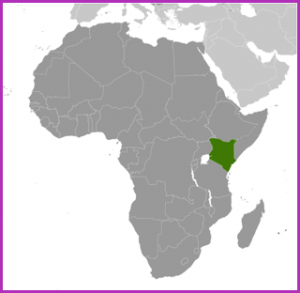
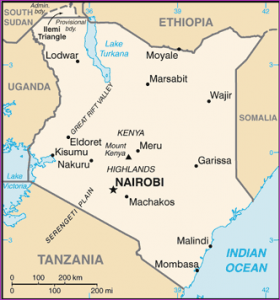
Kenya is located in Eastern Africa, bordering the Indian Ocean, between Somalia and Tanzania. Its population of more than 55.8 million (2022 est.) is heavily concentrated in the west along the shore of Lake Victoria. Other areas of high density include the capital of Nairobi, and in the southeast along the Indian Ocean coast.
Kenya has experienced dramatic population growth since the mid-20th century as a result of its high birth rate and its declining mortality rate. More than 40 percent of Kenyans are under the age of 15 because of sustained high fertility, early marriage and childbearing, and an unmet need for family planning. Kenya’s persistent rapid population growth strains the labor market, social services, arable land, and natural resources.
Agriculture remains the backbone of the Kenyan economy, contributing one-third of GDP. About 75 percent of Kenya’s population work at least part-time in the agricultural sector, including livestock and pastoral activities. More than 75 percent of agricultural output is from small-scale, rain-fed farming or livestock production. However, currently, an exceptional shortfall in aggregate food production and supplies due to drought conditions is causing high food insecurity. In the March to June 2022 period, about 4.1 million people were estimated to be severely food insecure, about 40 percent higher than the same time in 2021. Severe rainfall deficits during the March-May 2022 rainy season impaired pasture regeneration in several central, northern, and eastern pastoral and agro-pastoral areas. As of late July 2022, between 25 percent and more than 85 percent of the grassland was affected by severe drought, reflecting consecutive poor rainy seasons since late 2020, which have affected both crop and livestock production. Prices of maize are at high levels across the country due to reduced availability and high fuel prices inflating production and transportation costs.
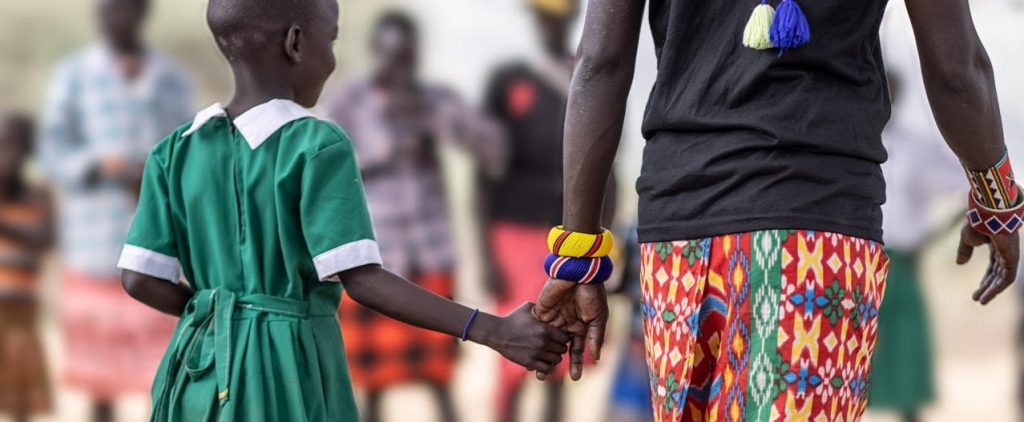
A closer look at the impact of COVID-19 on GBV
The pandemic had an immense impact on violence against women and girls. Globally, even before the COVID-19 pandemic began, one-in-three women experienced physical or sexual violence, mostly by an intimate partner. COVID-19 exposed and exacerbated gender inequalities, and nowhere is that more evident than the increased risks of GBV against women and girls. Reports of rising cases of GBV have emerged worldwide. Already a significant problem in Kenya, Uganda, Nigeria, and South Africa, GBV in these countries has been exacerbated by government restrictions intended to contain the spread of COVID-19. A survey of those who work in GBV prevention in those countries showed that nearly all (98.9 percent) of respondents reported that COVID-19 impacted their work, with the majority stating that their work, including community-based prevention, shelters, and legal services, decreased due to government restrictions or GBV services being deemed non-essential.
Worldwide, evidence shows that the overwhelming majority of women survivors of violence do not report to police, helplines, or other service providers. The pandemic made it even harder for women to report or seek help. For those who do seek help, 80 percent of the countries who provided information/data reported an increase in calls to helplines and hotlines after the pandemic outbreak. In addition, survivors have limited information and awareness about available services. Due to disruption of general services and irregularity of service provision, women have limited reliable information and awareness about which services are currently available and what is required to access services. Media coverage focuses heavily on the pandemic, with limited dissemination of information specifically for survivors and women at risk of violence. On the other hand, it has been increasingly difficult for service providers to reach out to women and girls due to restricted movement, physical distancing, or lack of effective communication channels. In some countries, resources and efforts have been diverted from response to violence against women to immediate COVID-19 relief.
Survivors have limited access to social and health services. The pandemic and subsequent measures to mitigate its spread disrupted the availability of, and accessibility to, services for survivors of violence. Though some services are now available remotely, access to online services remains a challenge for many women and girls with limited access to the internet or phone service. Violence survivors are also experiencing limited access to essential legal and protection services. This can put survivors in a more vulnerable situation and reinforces perpetrators’ impunity. In some areas, women are not able to file complaints or launch legal cases against their perpetrators.
Source Materials
NIH National Institutes of Health
